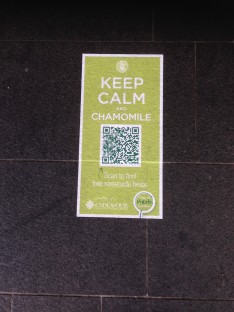Why QR codes will not sell your herbs
An ad for ‘free streetside herbs’ is a prime example of when using QR codes is useless, argues Alex Hayes.
This morning I stumbled across the most baffling piece of advertising, which used a piece of technology most people don’t use, placed in an spot it is difficult to stop in, without explaining what it was promoting to a group of people who do not have time to stop and find out.
 The ad in question seems harmless enough. ‘Keep calm and chamomile’ may be a little twee for some, but it’s at least quirky, and links well to what appears to be the subject of the ad ‘free streetside herbs’.
The ad in question seems harmless enough. ‘Keep calm and chamomile’ may be a little twee for some, but it’s at least quirky, and links well to what appears to be the subject of the ad ‘free streetside herbs’.


“The whole execution of this feels lazy and cheap” – I’d disagree, I think it is the opposite of lazy. Someone has come up with an outside the box idea, something they think is new and interesting, and couldn’t wait to get it out there. The fact that it does not succeed on these points does not mean it is lazy. It wasn’t a good execution, for all the other reasons you say, but I like the thought process here. It was a good try of a bad idea.
Otherwise, does feel like we’re picking on the little kids a bit here.
Imagine if they had the forethought to put it on the ground where the author was waiting 5min for a train ticket? At least people there were standing still
62% of people, according to research undertaken in 2012…just sayin. If Mumbrella is going to start doing opinion pieces bagging specific marketing efforts, I’m sure there are an awful lot worse examples out there than this one.
Imagine if they used a url like ‘freeherbs.com.au’.
Man you should put that energy & effort into something positive. Blog bashing people who are at least trying something new doesn’t help the industry